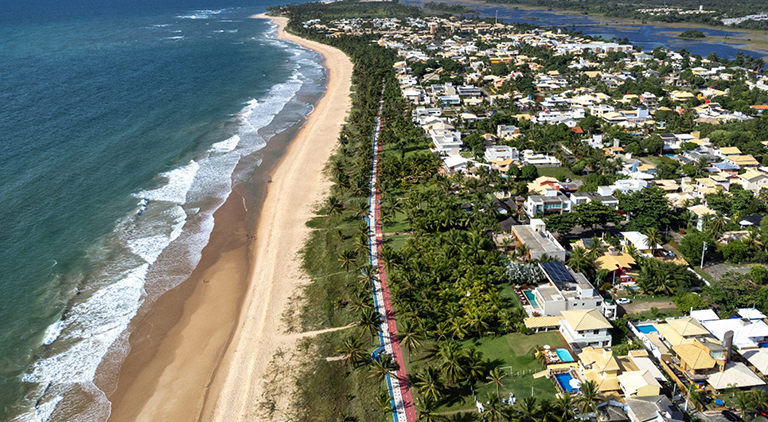By David Dodd, Founder ISRC Coastal communities around the world are confronting a mounting crisis as they grapple with the multifaceted challenges of climate change. From rising sea levels to severe storms, these communities are bearing the brunt of climate impacts, with devastating consequences, particularly for the most vulnerable among them. The compounding nature of climate consequences exacerbates the risks faced by coastal populations. As global temperatures continue to rise, coupled with environmental degradation and recurring disasters, coastal communities are finding themselves with diminishing room for successful development and adaptation. What role do rising sea levels play? Rising sea levels are a pressing concern. Driven by the thermal expansion of warming waters and the melting of glaciers and ice sheets, sea levels have been on the ascent for decades. According to the Intergovernmental Panel on Climate Change (IPCC), sea levels rose by 0.20 meters between 1901 and 2018, with an acceleration observed since the late 1960s. Future projections vary depending on greenhouse gas emissions, but even in the most optimistic scenarios, substantial sea-level rise is expected. The long-term implications of rising seas are dire. Low-lying coastal regions, including many major cities, face inundation. A significant portion of the population resides in areas barely above sea level, leaving them vulnerable to flooding. Population growth and urbanization exacerbate the problem, with millions at risk, particularly in Africa and southern Asia. What contributes to flood risks? The immediate threat is the intensification of coastal floods due to rising seas. High-tide flooding events have become more frequent, with the IPCC warning of a continued increase in coastal floods throughout this century. Without adaptation measures, flood risks to coastal communities will rise significantly. Compounding the flood risk are increasingly severe storms and cyclones. While the overall frequency of tropical cyclones remains uncertain, there is evidence that the proportion of severe Category 3-5 cyclones has increased. Additionally, heavy precipitation associated with these storms has intensified due to human-induced climate change. Bangladesh is a low-lying coastal area at risk One of the most vulnerable regions is Bangladesh, where ISRC Chief PPP Advisor David Baxter has been working to structure Public Private Partnerships to combat their coastal crisis. A vast low-lying coastal area is home to millions. Violent storms and cyclones regularly batter this area, causing tidal surges, floods, and extensive damage. Coastal floods have already displaced many, and the situation is worsening. Sea-level rise, coupled with the monsoon climate and shifting rivers, exacerbates the risk. Compounding these threats is, as in many countries, a history of widespread development in vulnerable areas without needed mitigation measures or investments. To combat this crisis, a series of investments to raise both natural and man-made barriers to storm surge and intense rainfall, plus enhancements to infrastructure resilience to effects of saltwater intrusion. How to we adapt to these challenges? Adapting to these challenges is immensely challenging. Vulnerable spots in the existing system, such as evacuation difficulties for women, the elderly, and disabled individuals, are being exposed. Cyclone shelters provide safety, but they do not prevent the loss of homes and livelihoods. Displaced people often end up in urban slums, trapped in cycles of poverty. Unless significant action is taken, millions in Bangladesh and other coastal regions worldwide. face displacement. Rising seas and extreme weather events present hard limits to adaptation. To combat these risks, major investments in both built and nature-based resilience are essential. Communities need support in strengthening infrastructure, livelihood improvement, education, early warning systems, and risk transfer measures such as catastrophe bonds, which are triggered to pay upon specific disaster size and intensity are met. Successful adaptation must be locally led, recognizing the unique challenges faced by different communities. What are some solutions? Impact modeling to provide an internal rate of return on investments in coastal protection and restoration, such as the International Sustainable Resilience Center (ISRC) Climate Impact Toolbox, can attract critical private investment. Also critical is the development of professional skills needed to successfully lead coastal adaptation worldwide. ISRC is working with two Universities in Louisiana, a state plagued by massive wetland loss due to climate, to establish a certificate program that can build the coastal adaptation leadership so desperately needed worldwide. In conclusion, coastal communities worldwide are confronting compounding climate risks that threaten their very existence. Urgent global action is needed to reduce emissions, support adaptation, and prevent displacement, ensuring that no one is left behind in the face of the escalating climate crisis. The Tufts: A Children’s Series On Natural Disaster Resilience Empower Kids with Vital Disaster Survival Skills and Ease Climate Anxiety with ‘The Tufts’ Book Series Explore the Book Series







